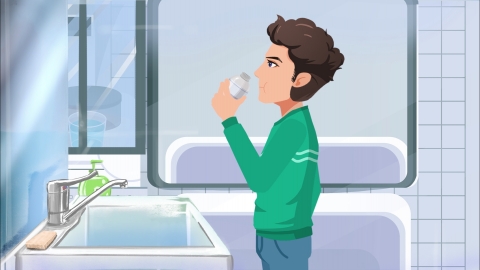Can drinking water from a bathroom sink cause infection with brain-eating amoeba?
The term "brain-eating amoeba" typically refers to Naegleria fowleri. Generally speaking, if water from the bathroom is contaminated, drinking this water may lead to infection by Naegleria fowleri. However, if the water source is clean and has undergone strict treatment processes, drinking bathroom water will not lead to infection. Detailed explanation is as follows:

If bathroom water is contaminated, drinking such water poses a risk of infection by Naegleria fowleri. Contaminated water sources may contain large amounts of organic impurities and microorganisms, providing a favorable environment for the survival and reproduction of Naegleria fowleri. When people drink this contaminated water directly, the Naegleria fowleri can enter the human body along with the water.
Conversely, when bathroom water is clean and has undergone strict treatment, drinking this water typically does not result in infection by Naegleria fowleri. Water that has been purified undergoes multiple processes including sedimentation, filtration, and disinfection. Sedimentation and filtration remove suspended particles, silt, and other impurities from the water, while the disinfection process—whether using chlorine, ultraviolet light, or other methods—effectively kills pathogens such as Naegleria fowleri, ensuring the water meets safety standards for drinking.
In daily life, never drink water of unknown origin or water that has not been treated, including bathroom water. Even tap water at home, although treated, may have been stagnant in the pipes for a long time; it is advisable to run the water for a while before use to flush out any stagnant water in the pipes. When cleaning the nasal cavity or mouth, always use water that has been disinfected to avoid infection by pathogens such as Naegleria fowleri due to water contamination.





